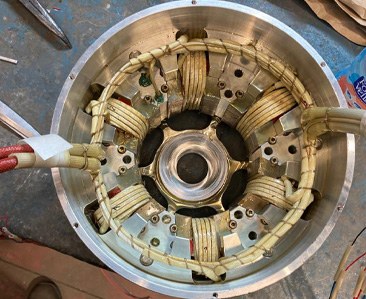European Union funding for research into Aluminum-wound Segmented Stator Switched Reluctance Motor (SSSRM) for Light Electric Vehicles (LEV).
Mar 22, 2024
The GAECEQS Research Group has received funding from the Next Generation funds of the European Union within the framework of the call for "Proyectos de Transición Ecológica y Transición Digital" of the Ministerio de Ciencia e Innovación del Gobierno de España, to investigate the drives with segmented stator switched reluctance motors (SSSRM) and with aluminum winding for the propulsion of light electric vehicles (vehicles included in category L in the EU directive 2007746 / CE) through a mechanical transmission.
This proposal aims to be an alternative with competitive advantages such as eliminating permanent magnets, high reliability, and a power/torque density comparable to those achieved with permanent magnet synchronous motors. The project will deal with a new three-phase modular SSSRM consisting of a stator with 6 U-shaped segments and a rotor with 10 poles. In each U-core, there is wounded a toroidal coil of aluminum. The connection (series or parallel) of the windings of the diametrically opposite U-cores forms the phases of the machine.
The SSSRM, compared to the conventional radial SRM, has short flux paths and, therefore, lower iron losses, resulting in higher performances and power densities. Using aluminum in the windings reduces mass and cost and facilitates the recycling of the machine after its useful life. Furthermore, given these advantages, its constructive complexity is not much greater than that of the conventional SRM.
The project will define guidelines for its design and sizing of the SSSRM, including eco-design criteria and universal design considerations. Progress will be made in developing an electronic power/controller based on a prototype built in a previous project, which will serve both for the control of SSSRM and any other type of three-phase SRM. As a preliminary to construction, the drives will be simulated considering their electromagnetic structure, electronic power converter, and control strategies, including torque ripple reduction and regenerative braking techniques. Once the simulation results match those expected, the SSSRM drive prototype will be built and tested on a test bench. Finally, its behavior under the operating conditions of a light electric vehicle chosen at the beginning of the project will be evaluated.

Share: